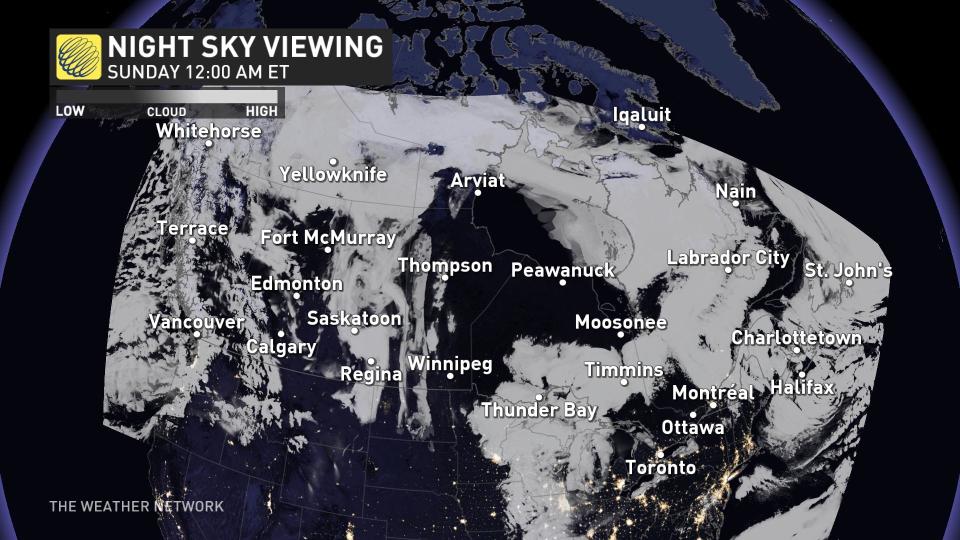Vivid auroras possible over Canada for second weekend in a row

Get ready for a weekend do-over as another geomagnetic storm buffeting Earth brings great odds of vivid auroras over North America on Saturday evening.
This is the second weekend in a row we’ve seen a solid chance for the northern lights to grace the skies over Canada. A strong geomagnetic storm produced fabulous auroras over Europe and North America last Sunday, with rare sightings as far south as Ukraine and Virginia.

This weekend’s aurora potential arrives courtesy of a coronal mass ejection (CME) that occurred on Thursday. CMEs are eruptions of plasma and magnetic field that stream away from the corona, the blazing-hot outer layer of the Sun’s atmosphere.
DON’T MISS: Last weekend’s aurora dazzled in the night skies over North America, Europe
When a CME hits Earth’s magnetic field, charged particles filter into the upper atmosphere around the magnetic north and south poles. This electrical charge ionizes gasses like oxygen and nitrogen, allowing us to see vivid colours rippling against the night sky.
Forecasters with NOAA’s Space Weather Prediction Center (SWPC) expect a moderate geomagnetic storm to hit Earth’s atmosphere on Saturday evening.

Based on the timing and strength of the solar matter pummeling our outer atmosphere, the SWPC expects this solar storm to produce a Kp-6 disruption to Earth’s magnetic field.
The K-index ranges from 0 to 9, with higher numbers correlating to conditions that may allow auroras to dip farther south in latitude.
If this geomagnetic storm lives up to its full potential, much of Canada and a large swath of the northern United States might be able to see the northern lights on Saturday night. The solar storm should peak between 2100-0300 GMT, based on the SWPC’s forecast on Saturday. This means that the best viewing should last through about 10:00 p.m. Eastern Time, or 7:00 p.m. Pacific Time.
The big wild card, as always, is the potential for clouds scuttling the view.

GET READY: Are you ready for the April 8, 2024, Total Solar Eclipse? Here's how to prepare
Scattered clouds will dot the skies across the western half of Canada on Saturday evening, with the greatest cloud cover expected across the territories, much of Saskatchewan, as well as lower elevations in British Columbia.
We’re likely going to get a decent show across eastern Manitoba and much of northern Ontario, where the only obstacles will be light pollution and the progress of the aurora itself.
Folks across southern portions of Ontario and Quebec may also have the opportunity to see the northern lights between scattered clouds, especially if the event lives up to its full potential.
Across the Atlantic provinces, we may need a stroke of luck to catch a glimpse of the show between clouds blanketing the region.
Beyond the risk for clouds, the other major factor in the aurora’s visibility is light pollution. Folks in southern portions of Ontario and Quebec may have a hard time seeing the northern lights even under the best circumstances due to the region’s intense light pollution.
The best way to maximize odds of catching this memorable spectacle is to get away from cities and suburbs, venturing into the darkest area you can safely find. Even minor light pollution
Let us know if you spot the aurora on Saturday night! Tag us @weathernetwork on X (Twitter) and Instagram, use #ShareYourWeather, or submit your best weather images to our photo gallery to reveal your remarkable skies to the world.
Header image submitted by Jas near Calgary, Alberta, on November 5, 2023.

